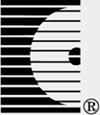一种改进的毫米波和太赫兹链路指向误差模型:天线和阵列设计的影响
IF 3.7
3区 计算机科学
Q2 TELECOMMUNICATIONS
引用次数: 0
摘要
由于定向传输,指向误差对毫米波(mmWave)和太赫兹(THz)通信的性能有很大影响。现有的指向误差模型在捕捉毫米波/太赫兹辐射特性和/或天线设计和阵列设计的影响方面存在不足。因此,在这封信中,提出了一个简单的分析指向误差模型,用于高度定向毫米波/太赫兹传输。通过对阵列单元辐射方向图和阵列因子采用高斯波束近似,该模型结合了天线设计参数(最大增益和3db波束宽度)和阵列设计参数(阵列单元数、单元间距和3db波束宽度)。通过CST微波工作室的电磁模拟验证了这一近似。然后,根据高斯波束近似推导了指向误差的统计量,并证明了指向误差遵循负对数- γ分布的特殊情况,其形状参数为2,尺度参数取决于天线/阵列设计和抖动方差。仿真结果表明,所提模型与仿真结果吻合较好。此外,还分析了航空通信场景的中断性能,以检查指向错误的影响。结果表明,天线和阵列的设计参数与抖动方差一样重要,不容忽视。本文章由计算机程序翻译,如有差异,请以英文原文为准。
An Improved Pointing Error Model for mmWave and THz Links: Antenna and Array Design Impact
Pointing error has a significant impact on the performance of millimeter wave (mmWave) and terahertz (THz) communications due to directional transmission. Currently existing pointing error models are lacking in capturing the mmWave/THz radiation characteristics and/or the impact of antenna design and array design. Therefore, in this letter, a simple analytical pointing error model for highly directional mmWave/THz transmission is proposed. By utilizing the Gaussian beam approximation for both the array element radiation pattern and the array factor, the presented model incorporates antenna design parameters (maximum gain and 3 dB beamwidth) and array design parameters (number of array elements, element spacing, and 3 dB beamwidth). This approximation is validated via electromagnetic simulations in CST Microwave Studio. Afterwards, the statistics of the pointing error are derived according to the Gaussian beam approximation, and it is demonstrated that the pointing error follows a special case of the negative log-Gamma distribution with the shape parameter of 2 and the scale parameter depending on antenna/array design and jitter variance. It is shown that the proposed model aligns perfectly with the simulation results. Moreover, the outage performance of an aerial communication scenario is analyzed to examine the impact of pointing errors. The results have revealed that the antenna and array design parameters are as influential as the jitter variance, and they cannot be neglected.
求助全文
通过发布文献求助,成功后即可免费获取论文全文。
去求助
来源期刊

IEEE Communications Letters
工程技术-电信学
CiteScore
8.10
自引率
7.30%
发文量
590
审稿时长
2.8 months
期刊介绍:
The IEEE Communications Letters publishes short papers in a rapid publication cycle on advances in the state-of-the-art of communication over different media and channels including wire, underground, waveguide, optical fiber, and storage channels. Both theoretical contributions (including new techniques, concepts, and analyses) and practical contributions (including system experiments and prototypes, and new applications) are encouraged. This journal focuses on the physical layer and the link layer of communication systems.
 求助内容:
求助内容: 应助结果提醒方式:
应助结果提醒方式:


